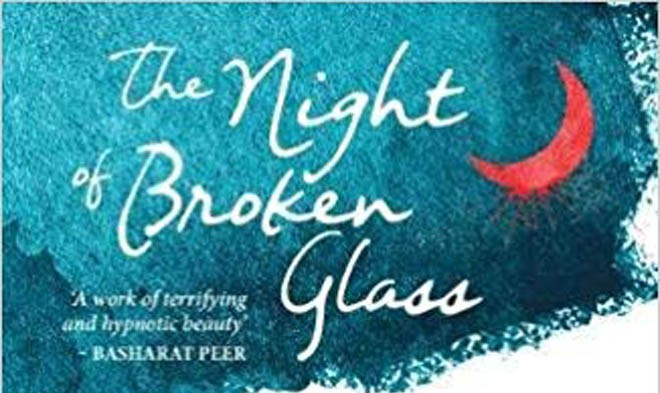
In his impressive debut novel, Feroz Rather explores what lies underneath the uprising in a valley where no one is at peace

Feroz Rather has written a powerful first novel. It is impossible to disentangle the story from Kashmir or vice versa in all fiction emerging from the valley. But despite the leitmotif of sadness and brutality, Rather manages to explore what lies underneath the uprising, the ordinary lives, the relationships and moral dilemmas, of victims and perpetrators both.
However, at no point in the novel can you downplay the impact of violence; the everyday life revolves around it so much that there are no peaceful interludes. Art imitates life. In the thirteen stories, both connected and disconnected, the writer imagines and creates characters and situations that must deal with violence -- of one kind or the other.
The language, refreshingly original, builds and heightens expectations from the very start. Each story is unique, and introduces new characters in a fluid sense of time and place -- there is no linear movement, with certain characters in the beginning shown at the end of their careers and, maybe, lives, and are resurrected in later chapters. A few are left hanging in the air, leaving you yearning to know more.
It seems the writer has an urge to tell all stories that agitate his mind. The focus is more on action and less on setting. Hence, despite the linguistic reservoir available to him, there aren’t many long descriptive passages; the willows, deodars and Jhelum all serve a certain function -- action around them. Yet, you can picture the locale, smell the smells, of food and death, and shudder and cry at a mother’s loss and father’s fortitude. The simmering rage among youth, abject hunger in certain parts, and fathers bravely carrying the coffins of their sons, it’s all there.
The sense of violence and tragedy is unbearable at times and not just for the reader. All the people involved in this cycle experience it through dreams and nightmares, in a world of magic realism where the real mingles with the unreal, sanity with madness. It’s a world where the living disappear while the dead keep roaming the minds and homes of those who killed them, staying dangerously close to their children.
No one is at peace in the valley.
Somewhere around the middle of the book, it seems there are too many characters and you can’t remember who is who. But a distinctive aspect and real strength of the novel is the development of women characters who are not just wailing daughters, wives or mothers but evolved beings, rebelling against class, caste, privilege and social norms, as they do in the real world.
A shockingly beautiful letter by a 24-year-old journalist Maryam to her editor exposes the moral choices that many in Kashmir, and everywhere else, face: "…There is no silence here. And the practice of journalism…also means being visible, vain and close to power…I am in danger of losing touch with stitching and my ability to reflect and contemplate… I do know that working with needle in silence created possibilities of humility and surrender for me. That is not the case with journalism… I will grow loud and I will start guffawing. I will have a false sense of power…This sense of entitlement is duplicitous…fills me with revulsion and discomfort. I say no to the Informer…"
The situations are so rooted in the soil that they become vivid images or scenes etched forever on the readers’ mind. Nagin and Rahman, husband and wife, wake up before the crack of dawn and walk together towards their bakery, lantern in hand, the light flashing on the fields where saffron is "in bloom and the flowers gleamed in the yellow light". As they light the tandoor and prepare the dough to make the first lawas, the "delicious aroma of burnt wheat" spreads out of the shop on to the pages. Soon, the first customers trickle in and the conversation between one united family begins.
Like a master storyteller, Rather moves to the other side to look at the insecurities of the soldiers and inspectors for whom "the city was a dangerous jungle, the roads, fanged serpents feigning sleep". Any car stopping before their camp is a ploy to destroy them and hence the shootings at sight. ‘The nightmares of Major S’ is a fascinating chapter that brings in the mythological story of Parvati and how "a pious rishi asked the Brahmins to settle here". His inner demons haunt him like crazy; at times the major reminds one of Captain Kadian of Mirza Waheed’s The Collaborator.
Read also: Interview of Feroz Rather
The Night of Broken Glass is a formidable addition to the corpus of English fiction emerging out of Kashmir. An authentic and original voice, it takes forward the fiction writers’ vicarious contribution of bringing the story of the valley to the outside world. Staying outside the realm of politics, these writers can and do choose not to take sides, expose the brutality of one state, the ambition of another, the collaborators within and can even sympathise with the perpetrators.
The Night of Broken Glass Author: Feroz Rather
Publisher: HarperCollins India
Pages: 232
Price: Rs756